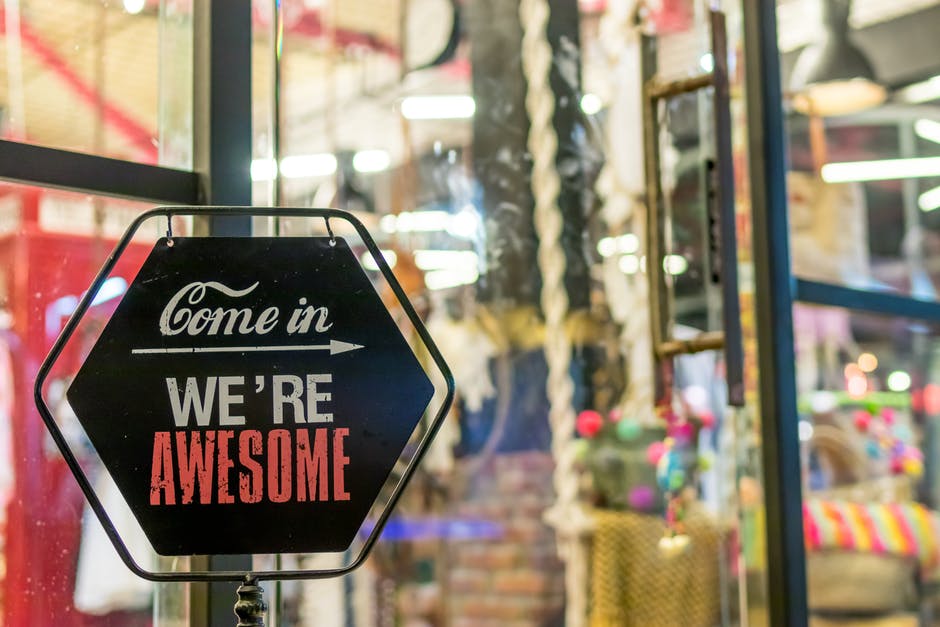Go Offline: An In-depth Look At the Various Types of Out-of-Home Advertising
Many brands invest 30-40 percent of their annual marketing budget on Facebook advertising. The benefits are obvious since Facebook offers precision targeting.
But with so many brands fighting for attention online, is there another way to win attention?
Out-of-home advertising is one such solution. And if you’ve been outside today, you will have encountered it at least once.
Are you looking for some new creative advertising methods? Read on to learn more about outdoor advertising.
What Is Out-Of-Home Advertising?
Outdoor advertising, also known as out-of-home advertising, is a broad category. It includes any adverts a person sees when they’re not at home.
Its big advantage is the sheer number of people that can see the ad in public. Think of high traffic areas like shopping malls or busy highways.
But that advantage is also often a disadvantage.
It only has a short instant to sell its message. You have other demands on your attention so it can’t waste time on lengthy copy or confusing images.
It’s an excellent way to quickly communicate an idea about your brand. Or it can convey a short and snappy phrase.
Out-of-home advertising often isn’t targeted in the same way print advertising might be.
A fitness brand might run an ad campaign on bus stands near gyms or sports stores. But people beyond the brand’s target audience will also see the advert.
It’s closer to the advertising you’d see in the cinema or on broadcast media.
Can You Give Examples of Outdoor Advertising?
Before widespread internet use, outdoor adverts made their point through repeat viewing.
But some of the following types of advertising can now serve a double function. Many now carry QR codes so passersby can access extra information online. No more remembering lengthy web addresses or brand names.
Here are some examples of outdoor advertising.
1. Billboards
Billboards are the most obvious form of outdoor advertising. They’re also competitive, both with each other and other distractions like smartphones.
That’s not to say they’re not effective. 3D or clever billboards can grab attention by standing out. People might snap unusual billboards to share online.
Check the location of the billboard first. If it’s beside a busy highway, will drivers have time to notice it?
Note, you don’t want to create a dangerous distraction. Wonderbra launched its famous ‘Hello Boys’ billboard advert in 1994. According to popular anecdotes, male drivers almost crashed after viewing the ad.
Remember, you don’t have a lot of time to make an impression. Aim for creativity rather than copy.
And don’t worry about a clever call-to-action. Focus on supporting your brand and provoking curiosity.
2. Street Furniture
Street furniture includes benches, telephone booths, and bus stops. IBM turned street furniture into ads for its Smarter Cities campaign.
An ad on a wall curved outwards at the bottom to provide a bench. Another one curved outwards at the top to create a rain shelter.
These ads gave passersby an excuse to engage with them. Because they were so close to them, they had more of an opportunity to view the ads.
Street furniture gives a smaller canvas for your advert. But people are more likely to see them when they engage with the street furniture itself. Try and land a spot in a high traffic area for the most impact.
3. Banners
Banner stands are a great way to advertise at in-person events. That can include:
- conferences
- trade shows
- fairs
- conventions
Set up a banner stand behind your stall to catch attention as people walk by.
Because of their size, banner stands are often a cheaper type of outdoor advertising. You pay for them once and reuse them at all your events.
They also have a more targeted effect. Conventions and trade shows gather your target buyers into one location. It’s a great way to raise your brand profile within your industry.
Banners are a great way to advertise small businesses on a budget.
4. Guerrilla Advertising
Of all the outdoor advertising types, guerrilla can be the most fun – and the hardest to get right. The idea is to generate excitement which prompts people to share the ad on social media.
This helps the ad to go viral. That keeps down spending costs because online exposure is often user-generated.
American TV channel TNT wanted to launch in Belgium. How do you advertise a new TV channel away from the TV itself?
In 2012, TNT promoted the ‘Push to Add Drama‘ stunt. They put a red button on a plinth in a square in Antwerp. The instructions told passersby to ‘push to add drama’. And they waited.
Curious passersby plucked up the courage to push the button. Whenever they did so, a huge drama unfolded in the square. It involved emergency services vehicles, fake gunfire, and actors.
At the end of the drama, a banner unfolded to advertise the channel. The ad went viral because people wanted to see the action.
5. Point of Sale Displays
As the name suggests, these displays appear at the point of sale. That might be in a cafe or a store.
They often encourage customers to buy something extra as part of their transaction. The customer is already primed to spend money since they’re at the till.
It’s easier to convince them to pick up something low-priced or in regular use.
You might also extend a point of sale displays to store windows to entice customers inside.
6. Adverts on Public Transport
The adverts on buses and subway trains have an advantage over billboards. Commuters often spend longer in the same space as the ad. That means copywriters can write longer adverts to give commuters something to read.
The Guardian claimed Londoners saw over 130 adverts in a 45-minute tube journey.
The ads still need to compete with books, smartphones, or newspapers. But a clever or eye-catching advert can do well.
Likewise, adverts opposite a train or subway platform often use longer copy. Passengers might read them while waiting for their transport to arrive.
Buses and taxis might also carry adverts on their sides. These adverts succeed because people keep seeing them.
They may only glance at them for a few seconds. But if they see them often enough, it has a cumulative effect for exposure.
7. Mobile Billboards
These are a cross between the adverts you’d see on buses or taxis and billboards. They also take different forms.
Companies might hire a rickshaw and rider billboard. Or they may prefer a motorized version. Either way, the mobile billboard makes its way around a set route.
Drivers and passersby both see the billboard. The rickshaw version gives people longer to read the billboard due to speed.
These can be a great way to direct people to nearby events such as conventions or tradeshows.
8. Photo Booths
Custom photo booths can be a great way to advertise at specific events. If you’re the one taking the photos, you can also add your logo as a watermark to images.
Think of the photo opportunities on big rides at theme parks. People love to get photos as souvenirs.
When people share the images on their social media channels, they also share your logo. These work best for fun or unusual brands, or branded events.
Can you offer an ‘Instagrammable’ moment to your target customers? Then consider a photo booth. They’re even worth hiring for corporate events to promote your company among staff.
9. Ambient Advertising
Ambient is more of a catch-all term for advertising you encounter outside your home. Think of the graphics you see on an elevator door or inside public restrooms.
Some brands even think ‘big’ and sponsor building wraps. These conceal scaffolding while a building is under renovation or construction.
Hoardings covered Venice’s famous Palazzo Ducale and Bridge of Sighs during restoration work. The sale of advertising space helped fund the conservation.
Is Outdoor Advertising Right for You?
As you can see, not all out-of-home advertising is equal. Look at banner stands or point of sale displays. They’re perfect for small, targeted groups of customers.
It’s difficult to measure the return on investment for billboards or transit advertising. There’s no real way to track how many people saw the advert. And it’s almost impossible to check if they went on to engage with the brand.
Static ‘street furniture’ adverts offer the opportunity to track signups or inquiries. Use QR codes or dedicated landing pages to do so.
When you’re planning outdoor adverts, think about what you want the advert to do. Is it going to encourage people to interact with it? Will people share images or videos of it online?
Looking to Advertise Your Business?
Out-of-home advertising can be expensive. But it can also be the perfect way to cut through the digital clutter.
Whichever option you choose, try to be creative or fun. The more out of the ordinary your advert appears, the easier it is to notice it. And the more likely people are to share it on social media.
If you’re looking to advertise your business, keep up with our business blog. We’d love to help you level up your business this year.





